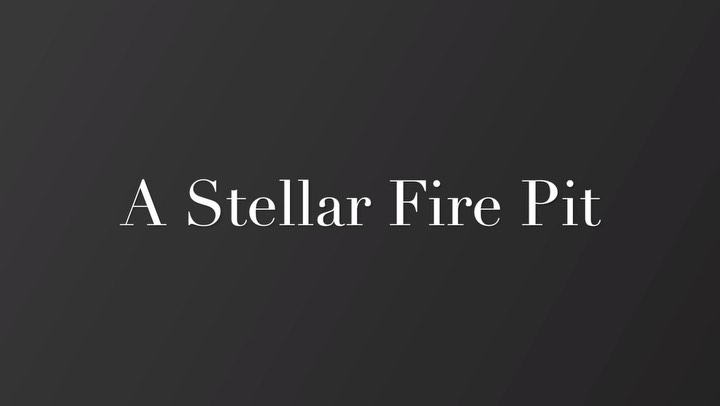Robot layout coming along nicely. We love this part if the process. We usually just draw it on the ground with soapstone which then disappears after a few days, but this time we will have it displayed full height in the shop as we turn this 2D sketch into a 3D robot. #tylerfuquacreations #mechan_inc
BLOG
International Deadline: January 1, 2023 – In this Nails in the Wall Gallery exhibit, we invite artists to explore any aspect of the concept of ’emerging.’ From personal life, to natural life, to the vastness of the universe…
Installing the spheres on Sphere of Spheres. #tylerfuquacreations #cityofmilwaukee #milwaukieoregon #oregonart
Just finished up a fire pit that I’ve been working on for a client. I think it turned out pretty nice. I can imagine when the flames are glowing from the center of this thing. It will look pretty awesome. Ironically it’s going to a fire fighter. #tylerfuquacreations #firepit
Some times something just doesn’t feel right. So what are you gonna do? You’re gonna fix it. #tylerfuquacreations #firepit #firepitdesign
The intersection of photography and computer-generated images was perhaps one of the quickest encounters of the modern form as well as one of the most troubling. Photography, in a reductive matter of speaking, captures a shot of reality—an object, a person, a place, a time—but computer generation, inherently a contrived endeavour, can more and more powerfully influence and fabricate this display of reality. In Stan Douglas’ Revealing Narratives series, he has easily and captivatingly toyed with time at a casual glance and dug deep into the layers of both mediums upon inspection.
Stan Douglas is a Vancouver artist of world renown, his work presented from the MoMa to the National Gallery of Canada, presented from Centre Pompidou to the Haus der Kunst. Through his examination across mediums and cultural, and social facets, Douglas is driven by a “fascination with the mechanic of representation.” Purportedly inspired by the legendary theatre artist Samuel Beckett, his work is a simple but striking mirror of the fallacies and failings of modern life.
Revealing Narratives, a presentation by Montréal VR and digital art keystone Phi Centre currently on view at the Art Gallery of Nova Scotia, combines Douglas’ two series Disco Angola and Penn Station’s Half Century. The former sees works in which Douglas inhabits the role of a photojournalist in the 70s covering both the fight of Angola for independent against Portugal as well as the rise of disco. From the attention to detail in all outfits and objects to even the dates contained at the end of image titles, at first glance, these images all do genuinely appear to document the ages they depict. If it weren’t for just how crisp and vibrant the works are, it would be near impossible to tell without context.
The pieces across Disco Angola are particularly striking in their uses of colour, from the vibrant outfits of disco partiers (Two Friends, 1975, 2012) to the depictions of soldiers in training out in the light of day (Capoeira, 1974, 2012) to the near-median of the two spheres through decidedly hip styling in front of the backdrop of intense military motivation (A Luta Continua, 1974, 2012). The relationship between these two tandem events through a singular narrative lens highlights both of their roles as a form of rebellion—against political oppression in Angola and against the bigotry and suppression faced by the queer and BIPOC fuelled disco movement—and join these distanced movements through occupation of the same space.
Stan Douglas, A Luta Continua, 1974, 2012. Courtesy of the artist, Victoria Miro and David Zwirner.
The other half of Revealing Narratives in Penn Station’s Half Century shows the former hub of travel as “a place in perpetual (re)presentation.” A commission of New York City’s Public Art Fund and Empire State Development, these works give testament to the grandeur of the architecture of this historic space as well as the varying roles it occupied across its own history. There’s a cinematic quality to the presentation, which plays into Douglas’ own intentions and discussions on how the layers of spaces as seen in public depictions—film, as a prime example—are an indelible layer on how one understands a space.
Each of these collections gives a sense of connection across time, merging our own context of all-too-manipulated imagery and power of representing the past, present, and future with the classic view of photojournalism as the scribe of time, cementing moments as well as telling the story of history by choosing what was captured—a time before constant capturing of everything, everywhere. Revealing Narratives sits somewhere between documentation and reconstruction, Douglas having found the intersections of contexts and mediums, and posits what photography means for us and our own record of our world.
International Deadline: November 10, 2022 – The HolyArt Gallery is now accepting submissions for ‘Art On Loop”. Our London, UK gallery is the only fully digital art gallery in the country showcasing art from…
Unfortunately, there is no safeguarding the artistic icons of our planet from accidents or human malice, no matter the stature. A fire occurring on October 3rd has resulted in what has been described as “irreparable damage” to the moai statues of Easter Island. While none seem to have been destroyed in the blaze, the incident has certainly left its mark on the faces of some—with more damage than the eye can see.
The wildfire began near the island’s Rano Raraku volcano before spreading down to the surrounding areas. The fire ended up covering 148 acres of land (approximately 148 football fields worth of space to contextualize), charring much of the island’s face and endangering the Unesco World Heritage Site the moai are situated upon. While the area has been cordoned off and is still being inspected for the extent of the damage, it is apparently believed that this may well be a purposeful act of arson.
Though at first glance the damage to the moai appear to be surface level through charring and accumulation of soot, experts say it could be much worse than it seems for the iconic statues. With their exposure to such high heat, it is likely that there could’ve formed cracks on their interior from the temperature change. This would severely endanger the stability of the moai with little to be done to rectify it.
The moai, often referred to as the Easter Island heads, were created by the indigenous Polynesian tribe of the Rapa Nui over five centuries ago. While their purpose was unknown to modern historians for many years, it is now believed that they were created and positioned in relation to the presence of freshwater springs across the island. Standing as high as ten metres tall—with unfinished ones that aimed to be twice as tall—these strikingly stoic figures represent deified ancestors of the Rapa Nui and, despite many only being aware of the heads, represent whole bodies created from solidified volcanic ash.
Time will tell what the extent of the damages will be to the moai. We’ve certainly seen miracles happen through concerted effort and funding from the world to maintain global historical sites in the wake of disasters. What also remains is whether this action was intentional, and if so, to what aim.
International Deadline: October 31, 2022 – The Arte Laguna Prize International Award, one of the world’s most influential competition for artists and designers, is now accepting entries. Numerous awards, exhibitions…





